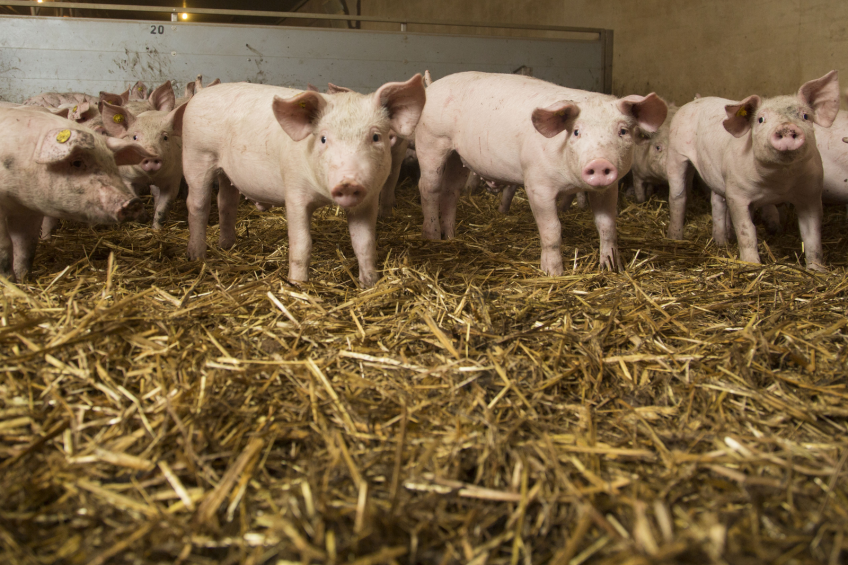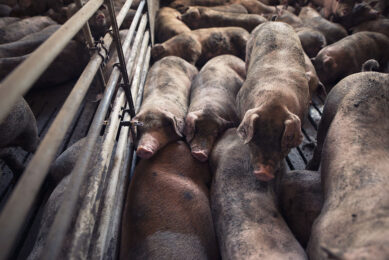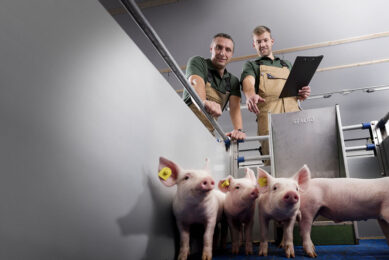Managing pain on swine farms

Pain management on farms is not going away any time soon and will continue to be central to the discussion on farm ?animal welfare. When addressing pain issues, what options do pork producers have?
By Monique D. Pairis-Garcia, Ohio State University & Anna K. Johnson, Iowa State University, United States
Pain has been defined by the International Association for the Study of Pain as “an unpleasant sensory and emotional experience associated with actual or potential tissue damage, or described in terms of such damage”.
Pain and suffering are affective states that adversely affect an animal’s quality of life. Hence, alleviation of pain and suffering are important goals for the swine industry. Several routine neonatal husbandry practices i.e. castration and tail docking, and physical conditions i.e. lameness and injury, can result in acute and chronic pain states. Pain can be mitigated or alleviated through two approaches:
1. Supportive care and;
2. Pharmacological intervention.
Supportive care
Supportive care often includes developing an environment that caters to the compromised pig. Compromised animals need food, water and a protective place to rest. Supportive care could include minimising and/or eliminating competition for pen resources such as food and water by moving animals to hospital pens. Hospital pens are designed to provide easier access to resources, reduce bullying and risk of injury and reduce source of infection to other pigs.
In addition to placing animals in hospital pens, adapting the environment and feeding protocol can also help. The addition of bedding (i.e. rubber mats or straw) can increase lying and resting times while providing nutritional support that meets or exceeds pig requirements may keep them interested in feeding and in turn prevent further health challenges.
Pharmacological intervention
Pharmacological intervention includes the use of drugs to mitigate or alleviate pain associated with a variety of aetiologies. Pain relieving drugs like local anaesthetics (lidocaine) can be used for husbandry procedures that cause pain. Non-Steroidal Anti-Inflammatory drugs (NSAID’s) can be used to minimise pain during acutely painful events (i.e. neonatal castration), as well as during chronic conditions such as lameness. Table 1 describes physiological and behavioural changes associated with lidocaine use during piglet castration and Table 2 describes performance and behavioural changes associated with NSAID use in lame sows.
Utilising pharmacological treatments can be very successful in managing pain but do come with a list of legal considerations. In countries where local anaesthetics or NSAIDs are not specifically labelled for pain management for swine, administration of either drug category would be considered extra-label drug use (ELDU). Administration of drugs in an extra-label manner requires the drug to be administered under the supervision of or by a veterinarian with an established veterinary-client-patient relationship and must follow all regulations of the governing body for animal drug use for that country.
Pain management on farms is not going away any time soon and will continue to be central to the discussion on farm animal welfare. Identifying, assessing and managing pain in a timely manner to prevent extensive animal pain and suffering is an ethical obligation for all that work in the swine industry, and can be managed utilising either supportive care, pharmacological intervention or a combination of both.
[Source: Featured in Pig Progress magazine no. 10 – 2014]











